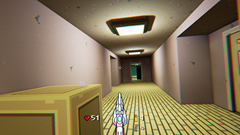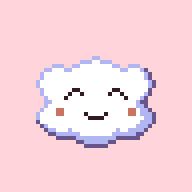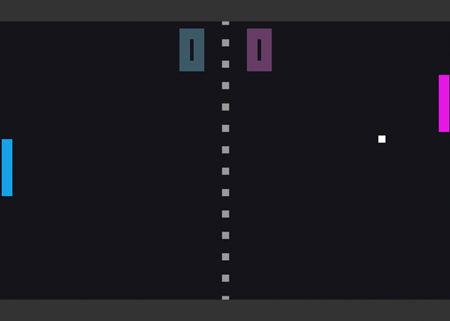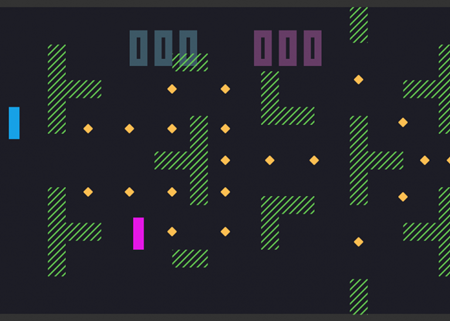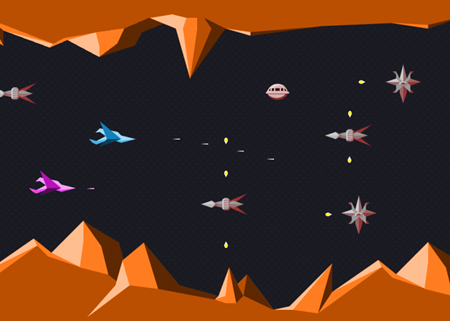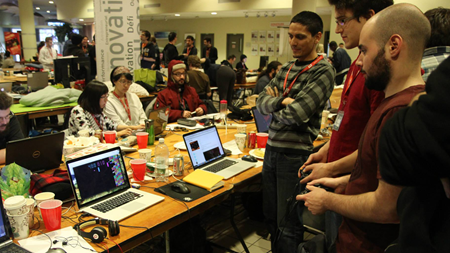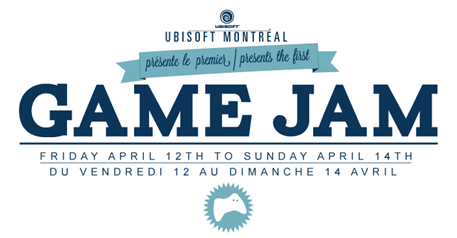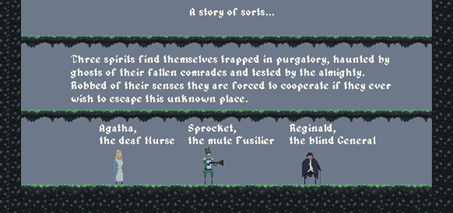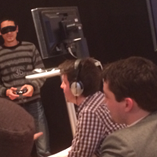Friday 1 January 2016
Sunday 11 October 2015
I’m home!
It's been a while...
My post mortem of the 2015 global game jam very much hinted that it would be my last jam in Montreal, and with good reason - in July I announced that I would be leaving the Ubisoft Montreal studio as well Ubisoft as a company. I’m happy to reveal that I accepted a role at Foundry 42 (as part of Cloud Imperium Games) as a senior designer on Squadron 42, the campaign component of Star Citizen. This meant my return to the UK, in early August.
That's right, I'm home!
It’s been a big change for me; after three years a routine begins to form and comfort sets in, but I felt like the time was right and the opportunity was too good to turn down (more on that later).
I’ve left behind a good group of people; the expats that put up with my frequent spam over internal company email/messenger, friends that I’ve met through various Ubisoft projects, and the handful of people I’ve met in the indie game development scene. As I hinted in my last post, a significant number of my coworkers from Watch_Dogs have already left Ubisoft, and I’m still in quite frequent contact with them, so I don’t think too much is likely to change in that department with the rest of my ex-comrades.
I enjoyed my time in Montreal and certainly won't be leaving empty handed. After my 3 years at the studio, I had a designed level and mission content for huge titles such as Watch_Dogs, Far Cry 4 and the recently announced Far Cry Primal.
My portfolio has never looked better, and I can safely say that I have a lot of pride in the work that I contributed to those projects, especially Watch_Dogs.
Perhaps more important to me though, were the experiences that lead me to creating solo projects in my free time; even going as far as to release my first indie game, Jack B. Nimble. This indie revelation opened my eyes to markets outside of traditional "AAA" console productions and definitely expanded my skill set. It was during this time that I also discovered game jams; a practice I hope to keep up once I am fully settled back in the UK (I'm still eagerly waiting on a container of my possessions to be shipped next week)!
 So Star Citizen; a huge Kickstarter success, a crowd funding poster child and potentially the ultimate space sim. So yeah, a new adventure; I'm not treading the same ground or following the same formula as previous games; Star Citizen is genuinely something new and ambitious.
So Star Citizen; a huge Kickstarter success, a crowd funding poster child and potentially the ultimate space sim. So yeah, a new adventure; I'm not treading the same ground or following the same formula as previous games; Star Citizen is genuinely something new and ambitious.
While it's an exciting project, I'm just settling in, so I don't have much to say right now other than to comment on the fact that I'm working with really talented people and some excellent technology. It's amusing how many connections I have to my new coworkers... It really is a small industry.
This weekend we had Citizen Con in Manchester (UK), and it went pretty fucking well if I do say so myself. You can watch the full stream here or check out the playlist of features here.
A lot of what was shown was very much work in progress but that didn’t seem to taint the reception any. The cast announcement went down great with the audience and the online response seems pretty great too.
It's strange adjusting to a company that has such a public and open development; the amount of secrecy surrounding my previous projects was insane. It's a refreshing change, as is working for a company that encourages free time game development without questionable restrictions. It's great having the freedom to spend more time on my independent efforts without fear of legal ramifications, etc.
So what’s next for me?
Based on the fact I have a little more freedom to work on my own projects, I’ll be doing a lot of personal game development. Obviously Star Citizen and Squadron 42 will be my highest priority in the realms of game and level design, but I will continue to develop my coding and art skills in my free time via my own projects.
The first of these projects will be the 4.0.0.0 update for Jack B. Nimble, currently planned to release before the end of the year (potentially with ports to other platforms than iOS too). Some have said that it might seem in vain to continue to develop this game any further, but it’s my first, you know? I want my first title to stand as an example of things to come. A high quality piece for my back catalogue.
Whether it sells or not is somewhat irrelevant; I have a fulltime job that pays the bills, so I have the freedom to create something that I am happy with before moving onto the next thing…
That being said, my second project, a collaboration with Scott Morin is slowly starting to ramp up again. We’re looking forward to getting stuck into this again – the response to the Vine I released on my 30th birthday (no significance) was excellent.
It’s clear that we have a game that people would like to play. All we need to do now is make it!
The third project is my attempts to create pixel art every day – something I’ve failed at. This hasn’t been easy with the move across the world, new job, being spread thin across projects, etc.
However, I’m going to try and do at least one piece of pixel art a week. Practice is the only way to improve, so I need to be strict on myself. You can follow my pixel art at http://pixeldailies.tumblr.com/
And finally, game jams. I plan to do so many more of these, but hopefully more collaborations than solo efforts. I need to start creating art for other people’s specifications or designing games to showcase art for other developers. I guess the next Ludum Dare might be my first real opportunity to do this. One game a month is a little much for me while I’m creating my own titles intended for release, but I’d like to increase my frequency a little.
In closing…
This will also be my final post to this blog - at least in it’s current form. In more recent years, I’ve found tip toeing around NDA’s and the overall paranoia of saying something “wrong” whilst working for a publisher to be a huge put off when writing anything really - especially if what I want to write borders on criticism. It’s also rather pointless to just blow the company trumpet when there are paid professionals already doing that (and better than I ever could). What’s a couple views on my personal page going to do? To be honest, it’s just wasted effort on my part - I’d be better off just spending the time making games.
Some of you may have noticed I removed the majority of the video posts/vlogs too - this is down to the fact I couldn’t maintain the momentum and therefore improve/respond to criticisms (of which there were many). It’s not so much that they were awkward (I was aware they were), it was more that I don’t believe their posting was truly serving anyone, and that’s just against the intention of this blog. I always wanted to offer some transparency into what it’s like to develop games and a peek into the window of the life of someone who does just that. I feel I’ve failed to deliver on that, so I’d like to step back and rethink my approach in order to better serve this potentially fictional audience.
My goal is to come back and maintain an open presence in the future, to perhaps offer some insight and encourage future developers to join the industry. I’m still working out what to do next, but until then, you can keep up with me on twitter or tumblr.
The next update you will see on here will be when I know what’s coming next, but until then, 'ave a good one.
Saturday 4 July 2015
Montreal Game Jam 2015: Pwrong
Some of you may have seen that I’ve been participating in a number of 1 hour game jams as of late (held at weekjam.com / #1hgj on AfterNET). They’re super short jams, so there’s not a lot to say about them – I might get around to doing a mass post mortem for them. Maybe. Until then, I am going to look back at a previous jam from earlier in the year and write a bit of a post mortem for it. This time I’m going to talk through my experiences at the 2015 Montreal Global Game Jam, where my team (known as “Not Enough Laptops”) entered for a third year running (this time with an additional programmer).
The Team
Anshul Goyal (Programming)
Sean Noonan (Art and additional design)
Pete Smith (Programming)
Aidan Green (Design and audio)
The Theme
What Do We Do Now?
Here was a theme that filled our minds with possibilities. It almost seemed “too easy”; it was hard not to come up with ideas. However it was not an easy task to decide which of these many ideas we should settle on. It was also when I noticed that we had matured as a group.
This was our third year jamming together and we weren’t as wide eyed, inexperienced or perhaps even as excited as we once were; we basically knew our limits, specialties, and we knew that we could succeed. We weren’t cynical by any means, but the ground felt familiar, and I feel our comforts resulted in an inability to decide on what to make.
Our first night had us pitching, scrawling, debating and scribbling out numerous game ideas; an adventure game of sorts where you wake up alongside a body with the police are banging on your door, a narrative heavy game where you play as a child dealing with the impending divorce of your parents, an isometric prisoner of war escape action game, and a bunch more… but nothing we could all fully agree on.
That is until midnight rolled around and we engaged full panic mode before thinking; what if we go with Pong, and the ball just vanishes? What could we do from there?
Pwrong.
The Jam
In essence, we planned our game as an homage to arcade games roughly spanning the generations; starting with Pong, moving through Pac-Man, switching to Akranoid, then R Type, in to Geometry Wars and finally teasing with a platformer.
Once we had finally decided on a rough concept we took our leave and slept on it some… as well as cramming in some last minute work - for example, I did a couple of colour scheme/interface mock ups, the first of which set the visual direction for the project.
The morning came and went – not that I saw it (I generally don’t rise during daylight on weekends). By the afternoon we realised that we were running behind our planned timeline. We should have had our first playable prototype, but were still not ready. It was around at this point I decided to cut myself off from the team and focus on the art.
I wasn’t used to working at such a high resolution, and the game type was something I’d never built art for. By the evening I’d managed to deliver the bulk of assets – I’d even over delivered by the scope of the game, as we had decided to cut the Geometry Wars game type and severely scale back the platforming section.
We pulled an all-nighter to just get it done. There was a bit of crankiness and we all felt awful, but as the sun rose and we tested the build, it felt worth it.
What went wrong
1. Brainstorm took far too long
As mentioned previously, this really took longer than it should have. I feel like I should shoulder the blame on this one. I personally had a hankering to create something pixel heavy; either something sickeningly cute or fast paced action with lots of explosions and screen shake. I was basically trying to steer all of the brainstorms towards one of these two forms. I simply wasn’t allowing for an organic process.
On top of this I also feel like I may have been on my own in that I was extremely resistant to anything narrative heavy. I wanted to create tight loops with high replayability; score attack, procedural generation, etc.
Basically, I feel my personal agenda got in the way on an early solution during brainstorming. I’ll try to be a little more aware of this in future jams.
2. The game was quite buggy
Though we fixed a bunch of issues post jam, we had a lot of bugs, most likely down to the scope of the game. I’m not sure what we could have done other than shrinking the scope, but with that being our unique feature, as it were, we were resistant to cut any more than we did.
3. Multiplayer only
Same story as with “No Evil”, multiplayer games, especially local, don’t always find an audience. They’re excellent games at the event locations, but once they’re released to the greater public, it’s easy for them to be ignored. Although we were low on time, it might have been preferable to drop the scope of the game a little in order to support solo play.
What went right
1. Two programmers helped with our scope
Our game was a collection of games – the increase in programmer count certainly was one of the driving factors in allowing us to achieve this feat. One of the programmers (Anshul) also wrote a post mortem where he discusses this in more depth – you can read that here.
2. We cut early
We cut the twin stick geometry wars clone early enough for us to continue to have a working flow, and for me to have not spent too much time creating new assets for it (though in the end, I had created most of them anyway).
Realistically it probably wouldn’t have been too difficult to implement the cut twin stick section post jam, but as is the case in most of these group game jams, the project is as it is on the final day, never to be returned to.
3. Tried a different visual style
A very personal positive from the jam – I tried a different style and scale and managed to pull it off. I never work at HD resolutions and always use pixel art as a crutch.
This really highlighted the need for me to start using Illustrator – using raster graphics to fake vectors is a huge time sink, especially when you consider that I have a program as powerful as Illustrator installed on my machine. I have already started learning Illustrator for future work.
The Game
Pwrong was well received, especially in it’s scope – we didn’t “win” anything as such but were name dropped amongst a list of honourable mentions. It was definitely one of the best jam games I’ve been a part of and it set me on a path of exploring vector art for future games.
Pwrong can be played over at GameJolt here: http://gamejolt.com/games/pwrong/45763
Final Words
Over the last couple of years “Not Enough Laptops” have followed up the Global Game Jam with the Ubisoft Game Jam under the name “Titanic Conspiracy”. However, with half of the members leaving Ubisoft and the other half wanting to participate in Ludum Dare instead, we decided to retire the name and sit out of the third Ubisoft jam.
Perhaps this was the final “Not Enough Laptops”/”Titanic Conspiracy” game, but I owe a lot to the various members for the opportunity to make games that I would never have on my own.
Here are the developers I’ve had the pleasure of working alongside in the jams over the last few years:
Aidan Green
I met Aidan at Ubisoft when working alongside him on Watch_Dogs; it was here where he introduced me to Construct 2, as well as the Montreal IGDA demo night. The demo night acted as an inspiring kick up the arse to participate in the global game jam. I strongly recommended anyone reading this to go to one of these IGDA nights in your area, or even travel if needed. Very inspiring stuff.
In our game jams, Aidan was our primary designer and sometimes audio creator. Though we often had conflicting opinions on where to focus our time on design, I think resulted in richer experiences – with Aidan’s focus on mechanics and mine on details, we created games I don’t think that we’d have been able to create alone.
Aidan left Ubisoft Montreal after shipping Watch_Dogs and a stint on Far Cry 4. He’s now at Eidos Montreal working on Deus Ex - Mankind Divided.
Anshul Goyal
A coding machine, Anshul was another Ubisoft employee. I never had the pleasure to work professionally alongside him, but rather met him through Aidan. Anshul was responsible for the code side of all of our jams.
Seriously, a machine. We couldn’t have done any of our jams without him.
Anshul is still at Ubisoft Montreal.
Scott Morin
Scott and I started Ubisoft on the same day and quickly became design pals, despite his love for Blizzard and World of Warcraft (what a massive nerd).
Scott was present for our Ubisoft Montreal jams and responsible for design and art duties.
Scott left Ubisoft Montreal after shipping Watch_Dogs and now teaches level design at Vancouver Film School. Scott and I are also working on this…
Pete Smith
I met Pete through Aidan just before the 2015 global game jam. I don’t think we’d have been able to finish Pwrong without him. Not only did he bring code, but really solid design feedback.
Pete left Ubisoft Montreal a couple months ago and is now going it alone.
Jean-Sébastien Caron
JS joined us for the 2013 Global Game Jam providing art. There was a wee language barrier at times, but that’s not unusual for game development in Montreal.
I’ve not heard from JS in a while, but a quick Google shows that he’s currently an animator at FAKE Digitial Entertainment. Nice.
David Baron
Indie warrior and fellow level designer on Watch_Dogs, David was present during our first couple of jams, providing design input and feedback.
David left Ubisoft in the later days of Watch_Dogs and is now at Eidos Montreal working on Deus Ex - Mankind Divided.
Many thanks to you all.
Wednesday 21 January 2015
Ubisoft Montreal Game Jam 2014: No Evil
Early last year, Ubisoft Montreal held it’s second internal onsite game jam, and as per usual, I didn’t blog about it whilst it was happening. With the 2015 Global Game Jam on the way I thought I’d write a few words about that last experience. However, it is worth noting that I have left it a lot longer than I should have – the old brain doesn’t retain information like it used to, and 2014 is already becoming a bit of a blur. That said, I managed to write up a couple of notes during the tail end of the jam, so at least I’ve got something to work from and write up…
It seemed that everyone involved in the first Ubisoft game jam was itching to participate in another – upon announcement, the seats were filled and registration closed rapidly. It’s not like we couldn’t all just do a game jam whenever we wanted, it’s more the organisation – it’s having a site as a central location for participation. It’s having multiple teams around you, giving that sense of a community and proximity. And this is why I’ll be at the Global Game Jam this weekend.
The Team
Anshul Goyal (Programming)
Aidan Green (Design and audio)
Scott Morin (Design and audio)
Sean Noonan (Art and design)
The Theme
You and I.
We basically took this to mean “co-op”, or at least making a game with more than one player. From this, we decided that we wanted to push the theme as a real world constraint rather than an in game or narrative one. From early on Scott and I talked about using the jam as an opportunity to create an “installation” style game - something that would likely only ever be played on the weekend of the jam. Whether it be from physical constraints, hardware setup, or indeed Ubisoft-centric legal issues, we set out with the possibility in the back of our minds that our game may only ever be played once.
Unlike the Global Game Jam, the Ubijam provides the theme a couple days ahead of the event – this is where Scott and I did some brainstorming and wrote up a couple of ideas matching the “You and I” theme with our self-imposed “installation” constraint.
We came to the conclusion that we would use the philosophical maxim of the three mystic apes, known as; “see no evil”, “hear no evil” and “speak no evil” – directly serving as the source of inspiration for our real world constraints.
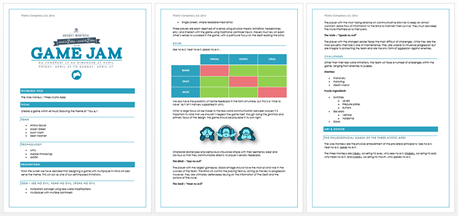
I wrote small first pass pitch document ahead of time to help cement the ideas that came about from our discussion…
The Jam
We started out our brainstorm with some debate. The private discussion between Scott and I before the jam, unsteadied the usual balance in our team – we were seemingly coming to the table with many of the angles already covered and there was a sense that much of the design was already done. In reality it was more that we’d established the treatment of the theme as well as imposed some additional constraints, and it wasn’t long before we were brainstorming the core design of the game with the approval of the rest of the team.
For the longest time we were confusing ourselves over which sense would be deprived from which player and how that would effect the game. Whiteboards were used heavily throughout these discussions as a constant reminder as to what each player could perceive and do. We agreed that to keep the game accessible and easy to read, we’d be willing to break the 4th wall and have the real world constraints not truly represented by a player’s in-game character.
Oddly enough, we had some heated discussions over the merits of elevators rather than ladders and vice versa – little did we know these would come back to bite us in the ass throughout development…
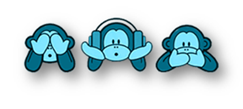 We left the meeting room with a design for a platform-puzzle game not too dissimilar to The Lost Vikings; with one player wearing a blindfold, another wearing noise-cancelling headphones, and another unable to speak (no ball gag present) – all puzzles were to be completed via communication that respected these constraints. This meant some communication had to be done within the game, and some in the real world.
We left the meeting room with a design for a platform-puzzle game not too dissimilar to The Lost Vikings; with one player wearing a blindfold, another wearing noise-cancelling headphones, and another unable to speak (no ball gag present) – all puzzles were to be completed via communication that respected these constraints. This meant some communication had to be done within the game, and some in the real world.
Knowing that one of our players would be blind-folded, we quickly settled on tile-based movement in order for a blind player to be told to move X number of steps by the deaf player (Knightmare flashbacks) allowing them to tap a direction a number of times. The deaf obviously acted as the blind’s navigator – there was a clear partnership here. Our problem was the relatively autonomous mute player, whom couldn’t verbally help with direction, nor respond to audio from the game in the real world. The mute player naturally became the defender, fighting enemies around the other two players and participating in time based visual puzzles, allowing the deaf player to relay the action of both themselves and the mute to the blind. It was an interwoven design and difficult to summarise, but after a level or two we would drip feed the mechanics slow enough to teach players at a safe pace. Perhaps too safe…
Game production started fast, and we were able to see the game shaping up quickly thanks to the heavy use of placeholders. We were sticking to “form follows function” and were strict on that, we didn’t have a form until the end of the first night – after the game had already reached a playable state. This was completely down to me. I had a bizarre set of seemingly random ideas that somehow linked together in my head, but not when I said them out loud.
By morning I’d come up with a means to tie all of the disparate elements together. You’d be playing as souls of the dead in a series of challenges placed upon them by Death as a means to escape Purgatory.
There was never really a point when the game didn’t seem ‘weird’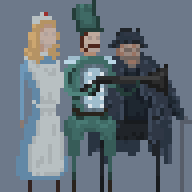 – what with having a 17th century fusilier alongside a world war II field hospital nurse, that communicated via a gramophone, whilst an 18th century general sat on a gravestone with a hidden pressure switch to open a door…
– what with having a 17th century fusilier alongside a world war II field hospital nurse, that communicated via a gramophone, whilst an 18th century general sat on a gravestone with a hidden pressure switch to open a door…
Yup!
It made sense to me, alright?
All in all I was quite happy with the visuals, and the strange world I had concocted. I spent a little too long early in development with animation tests, not really thinking about the tile-based nature of our in-game movement. Animation would just add noise to the proceedings. We ended up just having the characters, or ‘pieces’, slide along the ground between tiles.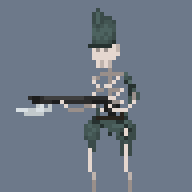
Scott and Aidan really hit it out of the park when it came to the level designs – they had a full plan and level progression with design patterns in place. A huge volume of content. By the end of the second night we had all of the art in the game and most of the levels fully playable. It was a pretty smooth jam from there…
…except for those FUCKING LADDERS. I’m not the code guy, that’s Anshul, so I can’t really shed any light on why they caused us so many problems, but they really did a number on us. We were basically screwed over by ladder bugs for the bulk of the (playable) production – many of which caused full on walkthrough breaks in the game. Some of these bugs were never fixed, halting progression through the levels at the midpoint of the final game.
Just some images of us playing the game…
The Postmortem
What went wrong
1. Brainstorming without the full team
Scott and I had discussions about the design before the jam and without the rest of the team. This meant we were going into a brainstorm session at the start of the jam with a pre thought-out plan. This perhaps alienated the other team members and resulted in a slightly slower conclusion being formed around the design in the early hours. If you work in a team, it’s best to have every member of that team involved from the outset. This is something I’ve seen happen in professional development also – the withholding of information in the early stages of production can leave an air of animosity or rebellion for those not on the “inside”. Games production is a collaborative effort and their conception should be also.
2. Unity still sucks at 2D
…or at least it did for us. Without good grid snapping and scale options, a tile-based game can be a real pain in the ass to build levels for. I’d made quite a lot of art for the game including purely aesthetic clutter that had specific layer and placement requirements – this slowed the polish phase down to a crawl, and caused some last minute friction as tiredness set in within the team.
3. Too much content, not enough testing
While our drip fed mechanics and level progression were admirable for a full production – they just killed pace in a demo environment. The difficulty curve and mechanic progression was far too slow. We had the game paced like a AAA retail title, not the installation style jam game we pitched at the beginning. Any time spent creating a lot of this content that went unseen by most players should have been spent on testing and polishing the content they did get to see.
What went right
1. We used placeholders
This was a massive improvement for us as a team, and a particularly huge benefit to me. With placeholders it meant whenever the rest of the team demanded assets from me, it was out of aesthetic desire rather than functionality - a great spot to be in, though sometimes the pressure to create something "not shit" can get to me and make my confidence waver (not difficult). Somehow up to this point I keep lucking out...
Anyway, this process was super smooth from my point of view, though I did witness the aforementioned Unity specific woes regarding grids, snapping and layers – from a distance (Disclaimer: I generally didn’t leave Photoshop) it appeared that the issues weren’t with the functionality of the tools, but rather the usability of them. This isn’t the first, second or even third time we’ve had issues with Unity in 2D.
2. Feature complete early
The majority of our code base, and most of the art placeholders were in good shape on the first night/second day. This gave us a clear idea of the amount of content we were going to be able to create and gave Anshul some time to work through any bugs (LADDERS) that were already scuttling about.
3. We all had a place
This was our fourth or fifth jam together, so we knew each other’s strengths and weaknesses, and therefore didn't need to spend time deciding roles. Knowing a person’s abilities, preferences and limitations can really help with communication, especially mid jam to late jam as tensions build. And possibly for the first time since we’ve jammed together, all of us were working up to the wire. We all had an essential role and could continue to contribute until the very end.
The Game
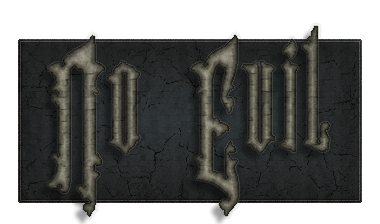
While the game isn’t available for download anywhere, it’s real world requirements would make it an unlikely sell to most people anyway. Not many people have a blindfold, noise-cancelling headphones, a ball gag, three people and three Xbox 360 controllers handy…
However, you can enjoy the trailer!
So that was a fun jam! Here’s a list of post mortems from some of the other jams I worked on…
- Global Game Jam 2014: Bad Mood Rising
- Game Boy Game Jam 2013: Jack B. Nimble
- Ubisoft Montreal Game Jam 2013: Spring Break
- Global Game Jam 2013: Hjarta
I had previously stated that I would be going back to do a post mortem of Bad Cloud (Game Boy Game Jam 2014) but now that the full version is on hold and likely cancelled, I won’t be talking about it any further. Sorry.
I hope you find those post mortems either useful or interesting. If you’d like to follow the development of the development of our next game jam game this weekend, then you can check my tumblr or go to my GameJolt page where we will be posting updates and test builds throughout development.
Wish us luck!
Thursday 1 January 2015
Games I played in 2014
So as stated in a previous post, I’ve achieved a hell of a lot this year – shipped two top 10 AAA games with Ubisoft (Watch_Dogs and Far Cry 4) as well my own first indie game, Jack B. Nimble (yes, this is me giving myself a pat on the back).
Somehow I even managed to play through and finish a bunch of games too – less than I was planning from last year (and mostly different), but still a healthy chunk of gaming. One observation is the large increase in indie titles that I’ve gobbled up over the year – significantly more than last year anyway. Another thing that is clear is how I’ve shifted my focus from almost exclusively Xbox 360 to PC and PS4. I’ve barely touched the Xbox One this year, something I think is down to Killzone: Shadowfall being my multiplayer game of choice rather than Titanfall – it just meant my PS4 was switched ‘on’ more often.
Xbox One
- Super Time Force
Xbox 360
- Gears of War 3
- The Walking Dead: Survival Instinct
- Metal Gear Solid 2
- The Walking Dead: Season 2
- The Wolf Among Us (Episode 1)
Playstation 4
- Call of Duty: Advanced Warfare
- Call of Duty: Ghosts
- Wolfenstein: The New Order
- Watch_Dogs
- Watch_Dogs: Bad Blood
- P.T.
- Flower
- Games of Thrones (Episode 1)
Playstation 3
- Uncharted 3
- Journey
Playstation Vita
- Thomas Was Alone
PC
- Quake
- Quake Mission Pack 1: Scourge of Armagon
- Half-Life 2
- Half-Life 2: Episode One
- Half-Life 2: Episode Two
- Home
- Gunpoint
- Gone Home
- Savant – Ascent
- Jazzpunk
- Dear Esther
- Organ Trail
While I didn’t finish FTL, Don’t Starve or Heavy Bullets, their rogue-like nature had me pouring hundreds of hours into them between them (especially FTL).
So yeah, I basically didn’t even touch my pile of shame or do even a tenth as many game jams as I wanted – as a result my plans for 2015 are a little more restrained than last year (but still probably too much).
- Start working on a new indie game (!!!)
- Finish the final content updates for Jack B. Nimble
- Port Jack B. Nimble to other platforms
- Android
- Windows 8 and Mobile
- PC, Mac and Linux
- Submit something to Pixel Dailies at least once a week
- Participate in the following game jams
- EVERY One Game A Month jam
- Global Game Jam 2015
- Ubisoft Game Jam (if there is another)
- Play through the following games
- Quake Mission Pack 2
- Portal 2
- STALKER
- FEAR
- Battlefield 4
- Far Cry 4
- Metal Gear Solid 3
- Assassin’s Creed Revelations
There are a few things that I totally dropped from last year; I decided to stop taking part in Ludum Dare/One Game A Month in favour of shifting my focus to Jack B. Nimble. Even taking part in a weekend jam had consequences on development, so around April I just stopped jamming. I also put One Day From Retirement on ice; I wasn’t very happy with the progress I was making and again, couldn’t give up time that I needed for other projects. It may come back in some form…
It’s rather unlikely that I will experience the same level as achievement in 2015 as I did in 2014, but I will be hitting the age of 30 – which is pretty good going, aye?
Wednesday 31 December 2014
Jack B. Nimble Winter update and Happy New Year!
Although I didn’t get it out in time for Christmas, the latest update to Jack B. Nimble has been released on iOS in time for the new year.

The update features a brand new Winter-themed level, “Bitter Bluffs”, much requested Game Center support for leaderboards, a number of big fixes and a couple of performances tweaks.
While the initial sales spike from the update wasn’t exactly mind blowing, the number of updates was really healthy (more than a third of the user base) – hopefully we’ll see a lot more players on the leaderboards in the new year.
Speaking of leaderboards, I am aware that previously scored scores are not being submitted to Game Center – I’m going to look into putting out a quick patch to redeem this. It was definitely a major oversight of mine, and I’m sorry to those that lost their scores in the latest update – take comfort in the fact that these updates are free and always will be.

I know I still need to write up my first month post mortem, I didn’t get a chance due to working on the Winter update. You can expect it early next year, I need to run some analytics and speak with some of my contemporaries. Until then, here’s a very early glimpse of the next new level…

Oh, and happy new year!
Tuesday 18 November 2014
Far Cry 4 Released!
Another game in the bag! Pretty happy with this one too – I came to the project quite late, so there’s a hell of a lot of the game I’ve not seen or played yet. I’m really excited to get stuck into it myself.
So far the reviews have been pretty strong and the word of mouth has been great. I’d argue that the initial reception and buzz so far is exceeding that of Watch_Dogs – a pretty good sign, seeing as last I heard, that game sold somewhere in the region of 10 million copies. Here’s hoping that same fortune will spread to Far Cry 4.
Oh, and while I was looking for an image/video to link I found this little thing – a Far Cry 4 branded Cannon Fodder eh? Quite the coincidence, just today I was talking about potentially making some form of Cannon Fodder homage/prototype…
Until next time!



